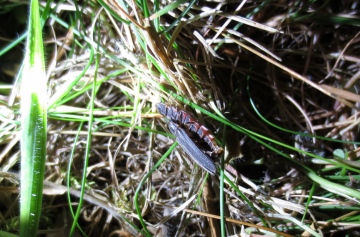Species Account for Lampyris noctiluca
PLEASE NOTE, many records in this group are not yet available
Lampyris noctiluca (Linnaeus, 1758)
Glow-worm
Coleoptera: Lampyridae

Reproduction for study and non-profit use permitted, all other rights reserved.
Taxonomic group: beetles (Coleoptera) - Available county data
View time series maps for Lampyris noctiluca
member log-on for taxon report
Images
upload a new image
Species text
The glow-worm is a beetle though only the males have typical beetle wing cases and the wingless females could be mistaken for an insect larva. It is the females that glow, to attract a mate. Larvae are predators on snails in long grass, usually on chalk or limestone. Although widespread in Britain, the species is thought to have declined over a long period due to habitat destruction, deterioration and fragmentation. This has been a subject of recent concern (e.g. Gardiner & Tyler, 2002), especially since the females are unable to fly, and little is known about how far the larvae will travel in search of new habitat. They are likely to find roads, watercourses or arable fields serious barriers to dispersal, so that local extinctions are unlikely to recolonise. References
Habitats
Recorded management for locations with Lampyris noctiluca
Recorded substrate and hydrology for locations with Lampyris noctiluca
Why not join the Club, register and add a new species page
Interpretation of distribution maps

























